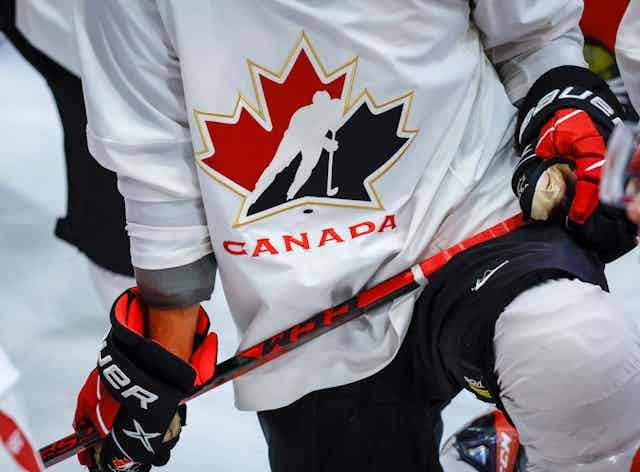Nike has officially ended its partnership with Hockey Canada in the wake of the organization’s handling of sexual assault allegations involving members of the 2018 men’s world junior team.
Nike originally paused the relationship in October 2022, but now has permanently ceased it after nearly 25 years of working with Hockey Canada. It joins a host of other sponsors that have also paused their support for Hockey Canada, including Telus, Tim Hortons, Bauer Hockey, Canadian Tire, Scotiabank, Esso and Sobeys.
The relationships between sports organizations and their sponsors are incredibly fragile. They exist only so long as the sponsor sees tangible benefits in the relationship or as long as the sponsor’s money is not seen as a liability for the sports organization.
In the case of Nike and Hockey Canada, both of these reasons have failed. The unique relationship between the two parties has additional complexities that make the end of this sponsorship especially notable.
A mutually beneficial departure?
Even though Nike is the one that ended its partnership with Hockey Canada, the decision could be a positive development for both parties. In particular, it could end up benefiting Hockey Canada’s public image.
In 2018, the Globe and Mail reported that a Nike Canada employee bought alcohol for Hockey Canada players prior to the alleged sexual assault in 2018.
This alleged connection Nike has to the sexual assault scandal makes a relationship with them a liability for Hockey Canada as they seek to demonstrate they are committed to good governance and transparency moving forward.

In addition, Nike Canada is currently under investigation for the potential use of forced Uyghur labour in China. The allegation is that Nike Canada is the main customer of a factory that employs Uyghur workers that attend evening classes for “vocational training” and “patriotic education” purposes.
Lastly, both parties are likely to be subjected to a wave of renewed scrutiny once the National Hockey League’s investigation into the sexual assault scandal draws to a close. The opportunity for both parties to no longer be associated with one another could work in either’s favour.
Nike’s foray into hockey
Nike’s relationship with the sport of hockey itself is complex. Nike was previously listed as one of Hockey Canada’s premier marketing partners, which play “a vital role in the participation and activations at Hockey Canada’s national events, and in creating best-in-class fan experiences at key international events.”

The Nike swoosh has been a staple of the Team Canada uniform since 1999. Nike has been the official uniform supplier for the Olympic Games, World Junior Championships, Men’s and Women’s World Championships and World Cups throughout the course of their relationship.
Additionally, Nike ventured beyond uniform production into the business of hockey equipment at the end of the last century. In 1994, Nike purchased Canadian hockey equipment manufacturer Bauer for $395 million and began its aggressive expansion into the hockey landscape.
However, Nike’s hockey equipment venture was largely unsuccessful and Bauer was sold to investment firms Kohlberg and Co. and Roustan Inc. for $200 million in 2008.
For this reason, Nike’s decision to end their partnership with Hockey Canada could be reflective of their broader strategy to leave the hockey marketplace, as much as an ethical statement on the organization or its current state.
Hockey Canada’s future
While the impact of this decision appears to have grave short-term financial consequences for Hockey Canada, it’s important to consider the scale of Hockey Canada’s cash reserves.
Hockey Canada had nearly $25 million in cash at the end of June 2021, $41.5 million in bonds and $77 million in equities across three trust and endowment funds. The total value of its assets increased by $20 million from 2020.
Certainly, their financial picture is not as rosy as it once was, given massive legal expenditures incurred over the past 24 months. However, the numbers from Hockey Canada have so far indicated that bankruptcy will not be imminent following Nike’s decision.
The organization will likely be able to find a replacement sponsor, as plenty of companies are eager to align themselves with the organization. In fact, according to sports journalist Rick Westhead, Fanatics, a licensed sports merchandise company owned by American businessman Michael Rubin, could be a potential replacement.
Hockey Canada will be able to rebuild, including securing a new sponsor, introducing new jerseys and electing new leadership, but it still faces difficult obstacles in regaining public trust.
Is Hockey Canada truly committed to transparency, accountability and further regulatory oversight? The answer to this question will not only dictate the nature of future relationships between Hockey Canada and its sponsors or donors, but the connection felt between Canadians and their national teams.

